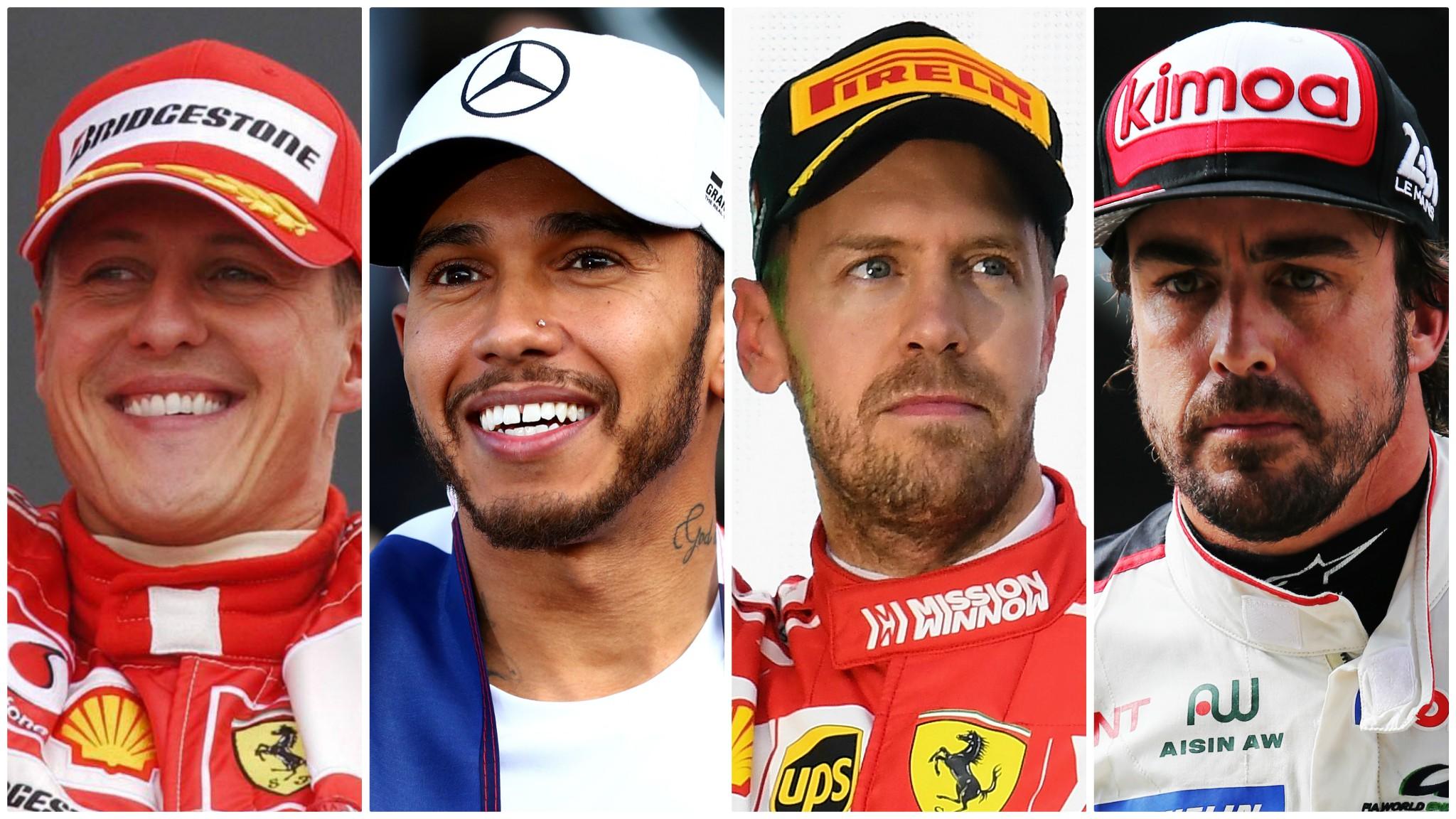Fernando Alonso: Lewis Hamilton, McLaren, 'spy-gate' & threats & demands to Ron Dennis
- Published
- comments
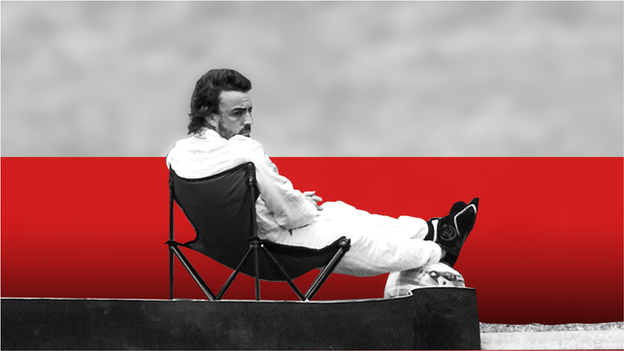
Fernando Alonso: the F1 great who couldn't catch a break - part two of five
The second part of our series on the key moments of Fernando Alonso's career reveals new secrets about the tempestuous events that ended his first spell at McLaren.
The 2007 Hungarian Grand Prix has gone down in Formula 1 folklore.
Fernando Alonso took pole after holding up McLaren team-mate Lewis Hamilton in the pits so he could not get out for a final qualifying lap.
The following morning, before the race, Alonso and McLaren team boss Ron Dennis had a huge row, external. Alonso threatened to reveal potentially incriminating emails to do with the 'spy-gate' case, external. Dennis phoned FIA president Max Mosley to tell him what Alonso had said.
That led to a second 'spy-gate' hearing, which re-analysed the claim that McLaren had benefited from secret Ferrari technical information. There, unlike at the first hearing, McLaren were found guilty, fined $100m and thrown out of the constructors' championship.
But people forget what triggered all that. And, until now, exactly what Alonso said to Dennis in that fateful meeting has never become public. This is the full story.
A trick - and then payback
Hungary was the 11th round of the championship. Tensions at McLaren were higher than ever. Dennis and Alonso were no longer really talking. And, six races on from Monaco, the drivers were in exactly the same position in the championship - Hamilton leading Alonso by two points.

Lewis Hamilton and Fernando Alonso both finished the 2007 season with 109 points, a point behind title winner Kimi Raikkonen
Final qualifying that year ran to a bizarre and complicated procedure whereby drivers began the session with the fuel load with which they would start the race. They then drove around doing what were called 'fuel-burn laps' before setting the lap times that defined the grid. Before the race, drivers were allowed to refill their tanks with the amount of fuel used on the 'fuel-burn laps'.
This system could only cause tension in a team, especially one with two drivers going for the championship.
Firstly, there was the question of how much fuel was in the car when the driver did his final qualifying laps - more fuel means a slower lap time.
Secondly, there was always an optimum time for a first pit stop in the race - and therefore an optimum number of fuel-burn laps. But two drivers in the same team could not stop on the same lap in the race. So how to decide who got to choose the optimum strategy?
McLaren's solution to this after the controversy of Monaco was to ensure both drivers had equal fuel loads for their qualifying runs - and to alternate who had the favourable race fuel strategy. In Hungary, it was Alonso's turn to have priority.
That should have meant that he left the pits first and did the most fuel-burn laps. This conferred a double advantage - it would not only give him a lighter car when he did his final qualifying run, but also more fuel for the first stint of the race.
But that is not what happened.
Hamilton left the garage first and was at the head of the queue waiting to go out at the start of the session, with Alonso behind. As soon as the cars had left the pits, the team radioed Hamilton to let Alonso past so they could run to the plan. But he ignored repeated requests. Dennis even came on the radio to him, but still Hamilton did not comply.
Alonso was now at a disadvantage - he would not only have more fuel in his car when he did his qualifying runs, but he would get less back for the start of the race. He was shouting on the radio, asking why Hamilton was not letting him by. Then, he took matters into his own hands.
Realising he had been tricked, Alonso worked out a way to pay Hamilton back. He slowed down, gauging it so that he was almost a lap behind Hamilton at the end of the fuel-burn phase, and pitted before him.
They went out to do their first qualifying laps, with Hamilton setting a faster time, before returning to the pits, Alonso a few seconds ahead on the road.
The team prepared to 'stack' the cars - service Alonso with fresh tyres before waving him out and then do the same for Hamilton, who was waiting behind him.
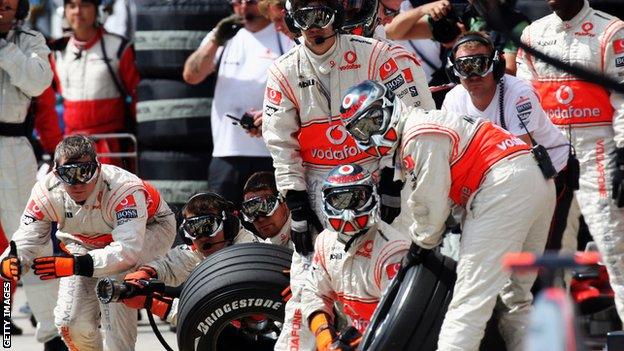
McLaren did not collect any constructors' championship points during 2007 after the 'spy-gate' scandal
But after his tyres were fitted, Alonso stayed where he was. Ten seconds went by before he accelerated away - just long enough to ensure there was not enough time for Hamilton to get back on track in time to complete a second lap. On his own second lap, Alonso took pole.
"The problems had started before," a source says. "This was just the final volcanic eruption. But Lewis started it. Let's not forget that. If he had let Fernando past, there would not have been an explosion."
Hamilton's father Anthony went to see the stewards and lobbied hard for Alonso to be punished. The stewards called up the two drivers and asked them what had happened. They took everything into account, and gave Alonso a five-place grid penalty., external
Alonso's demand to Dennis revealed
The next morning, Alonso was still furious.
For some time he had been telling Dennis that he and Hamilton should not be racing each other. The pattern was obvious. They were taking points off each other, and the Ferrari drivers were still too close for comfort. If they were not careful, Alonso believed, they would end up losing a title they should win.
Alonso decided to play his hand. With his manager Luis Garcia Abad also in attendance, he had a meeting with Dennis a few hours before the race.
Alonso told Dennis he needed to right the wrong Hamilton had caused him the day before. Hamilton had double-crossed him on the fuel-burn laps, Alonso said, and now he had a penalty and was sixth on the grid. It was not right.
The relationship was already broken after Monaco. But what Alonso said next ensured on the spot that he would have to leave the team at the end of the year.
It is well known that Alonso threatened Dennis that if the team did not do what he wanted, he would reveal to the FIA emails he had that were relevant to the 'spy-gate' case, in which McLaren had recently escaped censure for one of their engineers possessing a document of confidential Ferrari technical information that ran to nearly 800 pages.
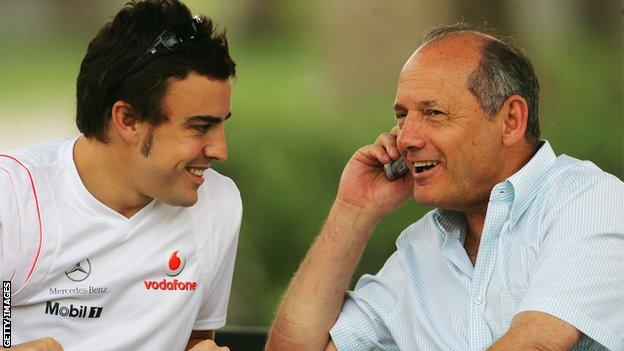
"Hi Lewis, Fernando wants to say something." Ron Dennis puts on a happy face
But what exactly he asked them to do has previously been known only by a handful of privileged insiders.
Alonso insisted that McLaren make Hamilton run out of fuel in the race.
Dennis asked Alonso to stop talking. He called in Martin Whitmarsh, his second in command, and asked Alonso to repeat what he had just said. He did. Dennis sent Alonso and Abad away, turned to Whitmarsh and asked what he thought they should do.
Dennis said he thought they should phone FIA president Max Mosley. Whitmarsh agreed. They also both agreed that they could not allow Alonso to race. They could not have a driver blackmailing the team.
Dennis phoned Mosley and told him what had happened. Mosley asked him what he was going to do, then advised Dennis not to take Alonso out of the car.

Then FIA president Max Mosley with Ron Dennis at the 2007 Belgian Grand Prix
It is widely believed that phone call led to the second spy-gate hearing, at which McLaren were heavily punished. But Mosley says that is not true.
"I already knew about the emails," Mosley says. Alonso had told Flavio Briatore, his former Renault team boss and his manager. Briatore, Mosley says, had told F1 boss Bernie Ecclestone about them, and Ecclestone had told Mosley, who had seen them before Hungary.
About half an hour after the meeting, Abad went back to Dennis and said that Alonso wanted to apologise - he had lost his temper and completely retracted everything he said.
Hamilton won the race from pole. Alonso finished fourth from sixth on the grid. After the race, Alonso shook Dennis' hand and apologised in person for what he had said at the meeting that morning. Dennis said at the subsequent FIA hearing: "I put it down to the heat of the moment, in which he was angry."
Mosley decided to launch a second spy-gate investigation. He demanded access to all McLaren's emails and, a month after Hungary, the team were summoned to attend a second hearing. They were thrown out of the constructors' championship, and fined $100m, less the money they would have earned from whatever position they finished in the championship.
Not long afterwards, Dennis met Alonso on neutral ground with their lawyers and negotiated an early release from his contract.
Both Alonso and Hamilton won one more race each that year, and ended up losing the title to Ferrari's Kimi Raikkonen by a single point.
As the championship reached its climax, the arguments Alonso had been making to Dennis about his fight with Hamilton came true.
Although his relationship with the team was now totally broken, Alonso beat Hamilton in both Belgium and Italy. That left Hamilton leading Alonso by two points with three races to go.
In Japan, Alonso, his car damaged and lacking downforce after a collision with another driver, crashed in the wet trying to keep up with Hamilton, who won.
In China, Hamilton crashed in the pit lane coming in to change badly worn tyres on which the team had left him out too long trying to ensure he beat Alonso. Had they brought him in earlier, he would have been champion that day at the end of probably the greatest season by a rookie in history.
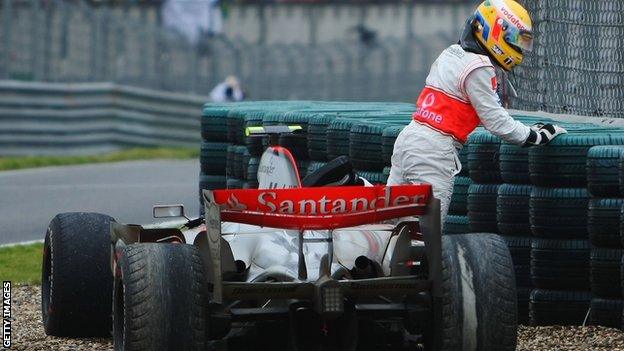
Hamilton won one world title during his six-year spell with McLaren - he should have had two
Then, in the final race in Brazil, Hamilton ran wide on the first lap trying to pass Alonso around the outside, dropped to the back of the field with a brief electronics glitch and recovered to finish seventh. Alonso's race was trouble-free but he could not keep up with the Ferraris.
Felipe Massa dominated, but Ferrari delayed him at his final pit stop, allowing Raikkonen to win the race and the championship. Alonso and Hamilton were tied, one point behind, Hamilton classified ahead by virtue of having more second places.
A month after that, Alonso officially left McLaren, and for a long time no-one thought he could ever go back.
- Published15 November 2018

- Published14 August 2018
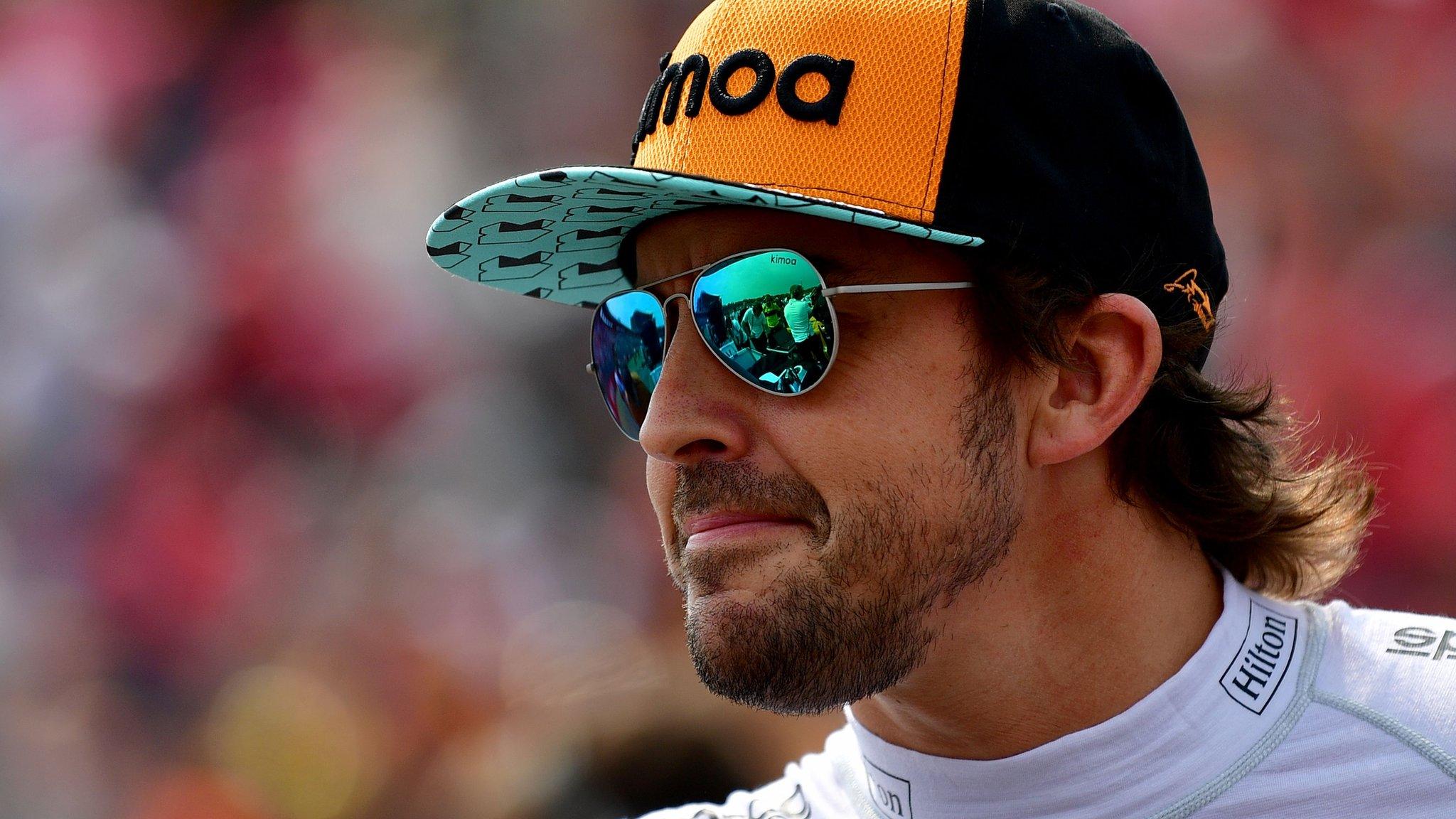
- Published31 August 2018

- Published8 November 2018
